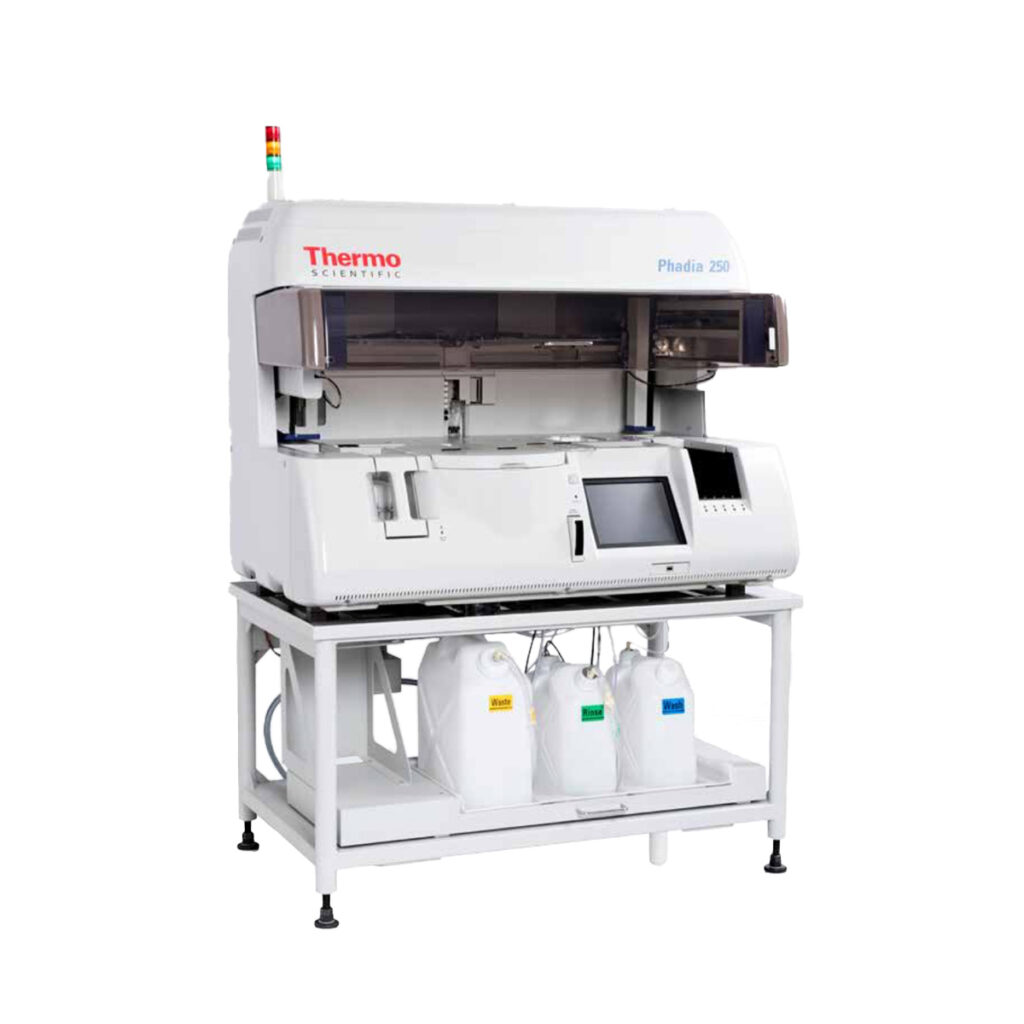Background

People with allergies have exaggerated immune responses to specific substances that would normally cause no threat to health. Allergies are becoming increasingly more common, somewhere between 15 and 20% of the population has some form so even if you don’t have an allergy yourself it is very likely that you someone who does. This relatively recent dramatic rise in the number of cases has meant that the role of the immunology laboratory in diagnosing and managing specific allergies has in turn becoming increasingly important. Equally, as the total number of cases is vast, the range of specific allergies is also large with common cases such as sensitivity to pollens and animals encountered, as well as more unusual incidences such as allergies to anesthetics and latex.
Science

Allergies are sometimes called type 1 hypersensitivity reactions and they occur because certain people have more of a special type of antibody called IgE. Specialised cells called mast cells in the tissue and basophils in the blood rapidly take up the IgE molecules. When an individual has been sensitised to an environmental substance and made specific IgE antibodies, subsequent exposure to the allergen results in the cross bridging of the IgE antibodies on the surface of the mast cells and basophils. These cells then explode releasing pre-formed mediators, stimulating the production of more mediators. It is these mediators that provoke the signs and symptoms of the allergic response. The extent of reaction is heavily dependent on the nature of the allergen. A lot of antigens (allergens) that are inhaled or ingested provoke only local reactions in the upper and lower respiratory tracts (rhinitis and Asthma) and gastro intestinal tract. However some ingested antigens such as peanuts, and others like insect venom that are injected cause a much more severe reaction called anaphylaxis. Anaphylaxis frequently presents as a combination of systemic symptoms including low blood pressure, rashes, constriction of the airways, and swelling of the lips and mucous membranes. Whilst treatable if caught early, these symptoms can be fatal in the severest of cases. Identification of specific allergic antigens that could be avoided is important because of the potential for severe reactions in some patients as well as the reduction in quality of life in patients with less severe but more persistent symptoms.
Laboratory

The immunology laboratory will identify these allergens that the patient is sensitive to. The individual can then avoid exposure to these, thereby gaining a better quality of life. This aim can be achieved in two different ways on referral from an allergy consultant. A quite simple method called the “skin prick test” exposes the individual to possible antigens whilst another method can identify the specific IgE from patients without them having to be exposed to any potentially harmful allergens. Skin prick testing is becoming more used at the “point of care” meaning that the clinician himself or nurses can do the test in the clinic. However specific IgE testing still has to be carried out in the laboratory by qualified healthcare scientists.
Talking Heads
Don explains what it is like working in an Allergy Laboratory
